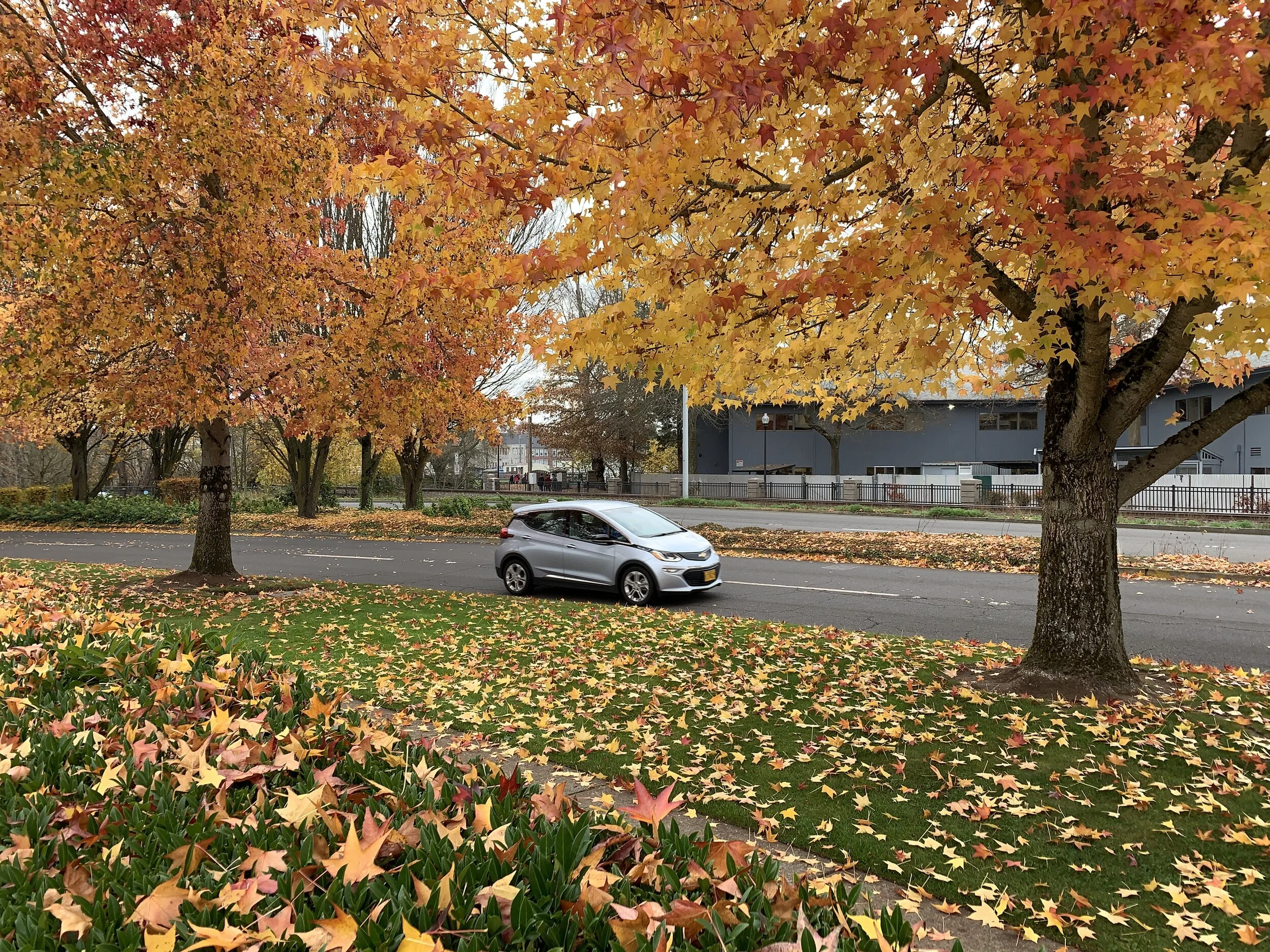Oregon Revs Up Efforts for Clean Transportation with Senate Bill 1044
Transportation is the largest source of harmful greenhouse gas emissions in Oregon – and for the last few years, those emissions have been on the rise. As a result, Oregon is not on track to meet its greenhouse gas reduction and climate change goals unless we make significant changes to how we transport people, goods, and services across our state.
Thankfully, Oregon is working on doing just that. Earlier this year, Governor Brown and the Oregon Legislature established bold, new targets for zero emission vehicle adoption by passing Senate Bill 1044. The bill aims to accelerate adoption of ZEVs – like electric vehicles, plug-in hybrids, or hydrogen fuel cell vehicles – which produce no or lower tailpipe emissions.
“With the passage of Senate Bill 1044, Oregon is helping lead the nation on how to transition to a cleaner, modern transportation system,” Governor Brown said upon signing the bill. “When zero-emission vehicles are widely used and charging stations are easily accessible to all, we can support economic development and the environment at the same time.”
SB 1044 aims to transform the motor vehicle market no later than 2035, with some aspirational targets:
At least 50,000 registered ZEVs on Oregon roads by the end of 2020
At least 250,000 registered ZEVs on Oregon roads by 2025
At least 25 percent of all registered vehicles and at least 50 percent of new vehicle sales will be ZEV by 2030
ZEVs will represent 90 percent of annual new vehicle sales by 2035
Oregon will work to provide programs and support that accelerate the purchase and use of ZEVs until greenhouse gas emissions are declining at a sufficient rate to meet the state’s reduction goals.
State of Oregon agencies will lead by example by purchasing or leasing zero emission light- or medium-duty vehicles and by adopting policies and rules that will work toward achieving the goals set out in the new law. The Department of Administrative Services will set a goal that at least 25 percent of the state’s light-duty vehicle purchases and leases will be zero-emission vehicles by 2025. And beginning January 1, 2029, all light-duty state vehicle purchases or leases are required to be zero-emission vehicles, with some exceptions in the event that the type of ZEV needed is not available.
Oregon’s public schools – and students – will also benefit from the law by allowing Oregon schools to use public purpose charge funds for fleet audits and the purchase or lease of zero-emission vehicles or to install electric vehicle infrastructure.
With the passing of SB 1044, the Oregon Department of Energy will be responsible for reporting on Oregon’s progress. ODOE will monitor ZEV adoption statewide and recommend strategies to the Legislature if Oregon is not on track to meet the targets. ODOE’s first report will be due in September 2021.
In Oregon, most ZEVs are all-electric or plug-in hybrid electric models, so the State of Oregon launched the Go Electric Oregon website to help accelerate ZEV adoption and track Oregon’s progress. Oregonians can visit the website to learn more about electric vehicles, explore ways to charge at home and on the go, and find incentives to save thousands on the purchase price of ZEVs.

